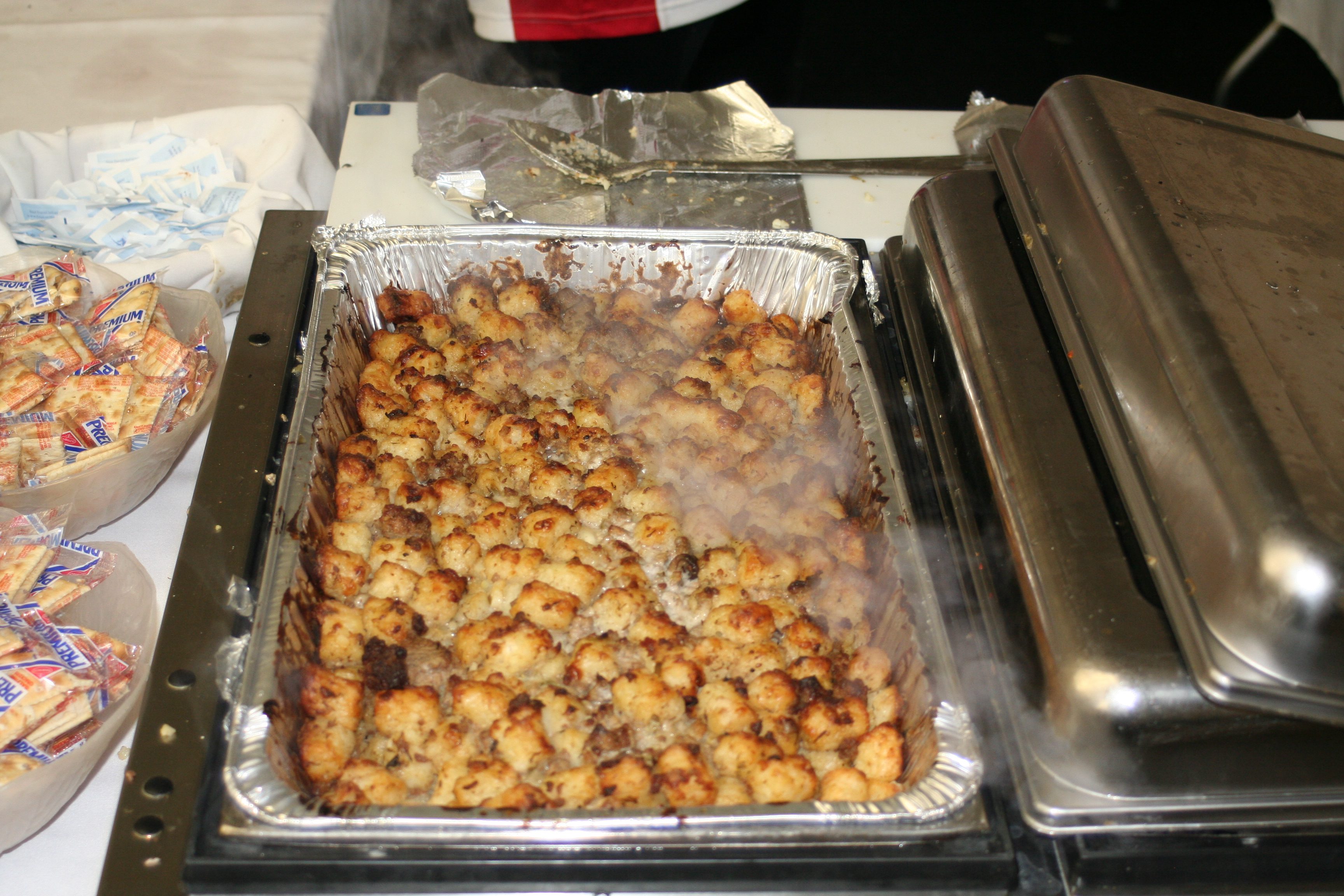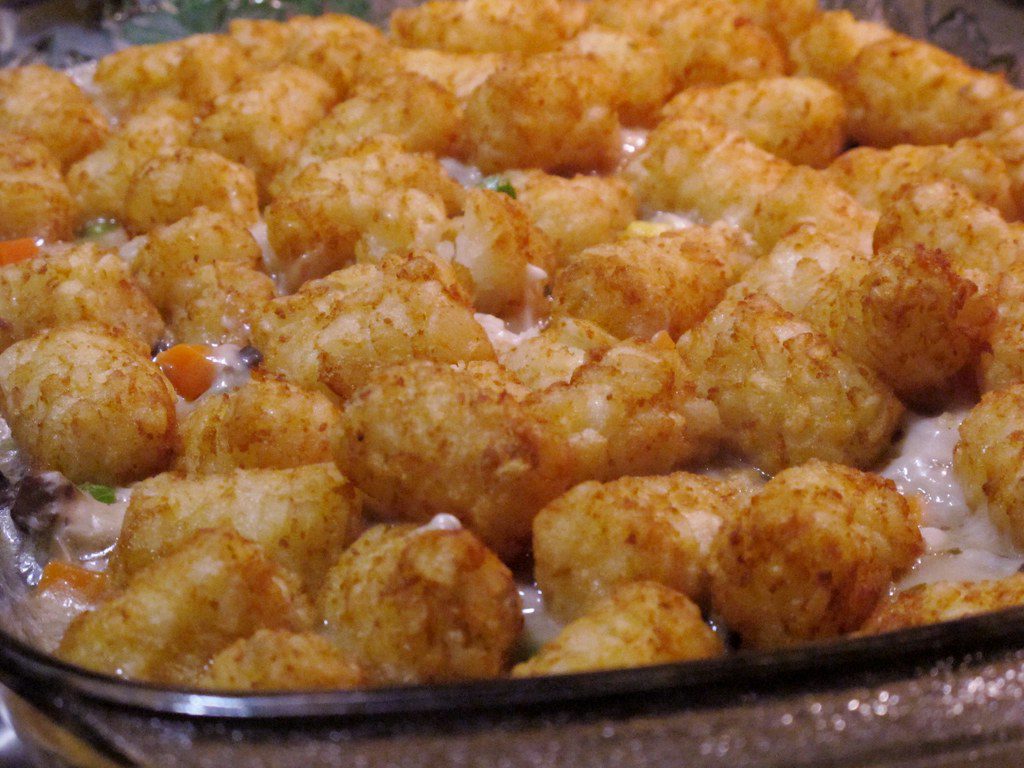Hotdish is an anything goes one-dish meal from the Upper Midwest, but it’s especially beloved in Minnesota and North Dakota. A creamy sauce binds three essential hotdish components together: starch, protein, and vegetable. And while the rest of the country might call this a casserole, take heed — though all hotdishes are casseroles, the reverse is not true. According to How to Talk Minnesotan, hotdish is ubiquitous throughout the Gopher State:
“It can grace any table. A traditional main course, hot dish is cooked and served hot in a single baking dish and commonly appears at family reunions and church suppers. Hotdish is constructed on a base of canned cream of mushroom soup and canned vegetables. The other ingredients are as varied as the Minnesota landscape. If you sit down to something that doesn’t look like anything you’ve ever seen before, it’s probably hotdish.”
The documentary Minnesota Hotdish: A Love Story speculates the Great Depression secured hotdish as a food staple and effective, affordable way of feeding entire families, with canned food and limited meat. The word “hotdish” was first used in a 1930 Minnesotan cookbook published by the Grace Lutheran Ladies Aid. This landmark recipe called for hamburger meat, onions, celery, canned peas, canned tomato soup, and Creamettes — Minnesotan macaroni — all to be stirred together and baked.

But hotdish was likely preceded by a 1910s American dish called “hot pot.” According to the hotdish documentary, World War I marked a pivotal moment for American casseroles and thrifty one-dish meals, with the onset of the U.S. Food Administration’s “Food Will Win the War” campaign. The home front war effort called for families to conserve food so surplus food could be shipped overseas to feed soldiers and combat famine. The Food Administration published recipes for “Meatless Mondays” and “Wheatless Wednesdays.” Casseroles and hot pot soon became a popular method of stretching a pound of meat for a whole family’s dinner.
The invention of commercial tater tots, circa 1956, changed the history of hotdish forever. Since then, many Midwestern cooks have covered their hotdishes with a layer of crispy tater tots. La Choy Chow Mein noodles, potato chips, and fried onions are also commonly used hotdish toppings.
Today, Hotdish is even at the center of a highly competitive culinary competition that pits the state’s congressional delegation against one another to see just who makes the best hot dish. While it’s mostly a dish made at home, The Mason Jar, located in Eagen, serves a version that will remind you of your grandmother’s cooking, if your grandmother made everything from scratch. Ground beef is browned and stirred into a rich and creamy mushroom sauce, and draped over tots. Melted cheddar cheese and a few more tots crown the top for rib-sticking glory.
According to eater.com; foodnetwork.com. Source of photo: internet








